[Customer Publication] cliCRISPR Breaks Through CRISPR Detection Barriers, Enabling One-Tube SNP Genotyping
Single-nucleotide polymorphisms (SNPs) represent the most common form of genetic variation in humans and are closely associated with a wide range of diseases. Traditional SNP genotyping methods, such as PCR and sequencing, require specialized equipment and trained personnel, making them unsuitable for on-site screening. Although CRISPR/Cas12a-based assays can operate at ambient temperature, the nonspecific trans-cleavage activity of Cas12a has made it challenging to directly distinguish between wild-type, mutant, and heterozygous genotypes. Recently, a research team led by Chinese scientists, published a paper in Biosensors and Bioelectronics titled “cliCRISPR: crRNA-limited CRISPR/Cas12a system for multiplexed detection.” The study introduces a crRNA-limiting strategy that enables complete SNP genotyping in a single reaction tube simply by comparing fluorescence intensity—without the need for physical separation, real-time kinetic monitoring, or complex data processing. EDITGENE is honored to have provided high-performance Cas12a protein for this groundbreaking work, contributing to the advancement of precise and efficient genetic detection technologies. Original link: https://doi.org/10.1016/j.bios.2025.117834 Spotlights 1.Innovative crRNA-limiting strategy breaks the bottleneck of multiplex detection: The research team first confirmed the specific cleavage activity of FEN1 on wild-type and mutant sequences, and verified via gel electrophoresis that the cleavage products P1 and P2 could serve as effective primers for SDA. Further experiments demonstrated that the designed crRNA1 and crRNA2 could guide Cas12a to specifically recognize T1 and T2, activating its trans-cleavage activity. Under conditions of target excess, fluorescence intensity increased with crRNA concentration. Notably, when crRNA1 was set at 10 nM and crRNA2 at 2 nM, the signal differences between T1 and T2 were pronounced, enabling successful differentiation of the three genotypes. Figure 1. Feasibility verification of the crRNA-Limited CRISPR/Cas12a detection system Through systematic optimization, the optimal reaction conditions were determined as follows: Figure 2. Optimization results of key components and reaction parameters Using a logic-gate-based approach, thresholds V₁ and V₂ were set to divide fluorescence slope values into three intervals corresponding to GG, AA, and GA genotypes. This method achieved stable and reproducible kinetic curve separation within 5 minutes. Specificity tests showed that non-target sequences (Random1–5) did not produce significant interference, demonstrating high specificity and stability of the approach. Figure 3. Genotyping strategy, kinetic curves, and specificity validation The cliCRISPR system successfully identified AA and GA genotypes in 10 samples from two families. The results were fully consistent with the TaqMan qPCR method and adhered to Mendelian inheritance patterns. All samples showed good reproducibility, confirming the accuracy and reliability of this approach for practical applications. Figure 4. Genotyping results of actual samples and family validation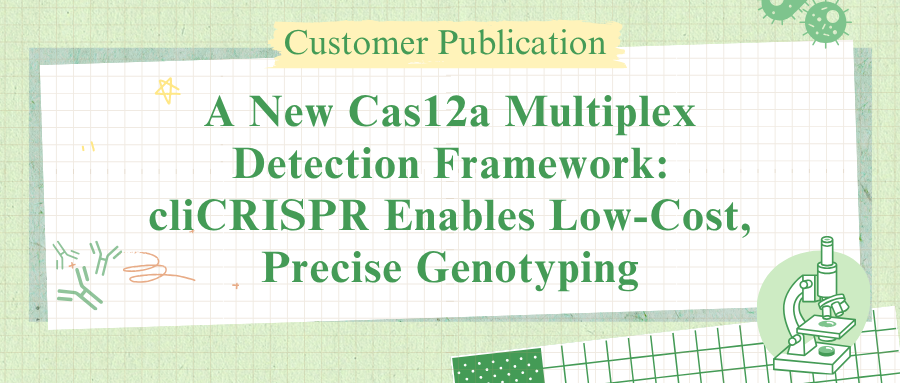
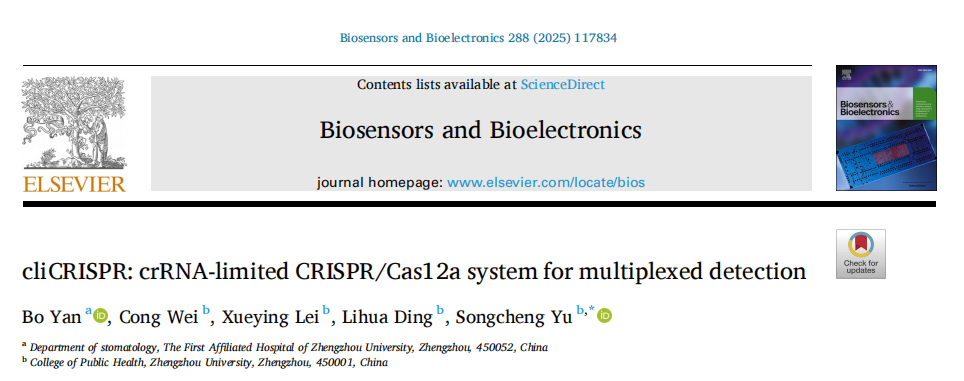
By precisely controlling the concentrations of different crRNAs, the researchers correlated fluorescence signal intensity with crRNA concentration rather than target abundance. This approach enabled the successful differentiation of wild-type, mutant, and heterozygous genotypes within a single reaction tube.
2.“Logic gate” interpretation enables simple and accurate genotyping:
The study introduced a fluorescence-slope-based “logic gate” interpretation strategy. By defining two threshold values (V₁ and V₂), continuous fluorescence signals were converted into discrete genotyping outcomes (GG/AA/GA), achieving clear and reliable classification.
3.Robust clinical validation demonstrates strong application potential:
The method was validated using clinical samples from real family cases, showing 100% concordance with the gold-standard TaqMan qPCR assay. Moreover, all genotyping results were fully consistent with Mendelian inheritance patterns, underscoring the accuracy and reliability of the cliCRISPR system.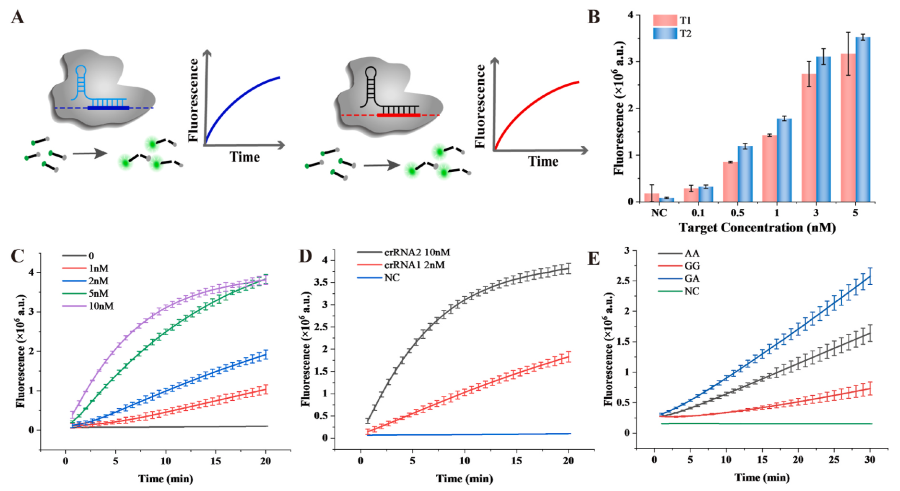
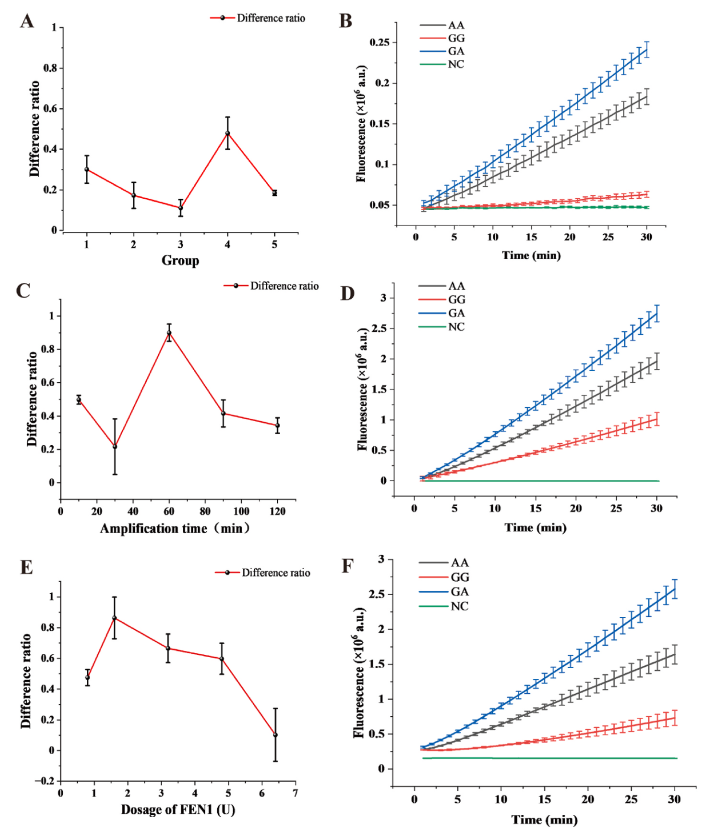
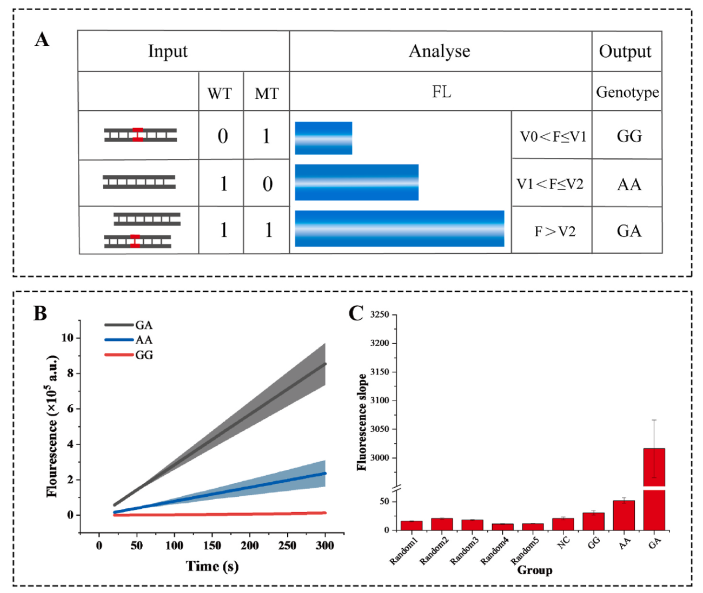

The cliCRISPR system leverages a crRNA-limiting strategy combined with logic gate thresholds to overcome the bottlenecks of traditional CRISPR/Cas12a multiplex detection, enabling precise SNP genotyping in a single tube without physical separation.
In genotyping of rs4646536, this method demonstrated high concordance with the gold-standard qPCR and offers advantages such as simplicity, low cost, and intuitive readouts, providing a powerful tool for rapid on-site genotyping and precision prevention.
Looking ahead, optimizing amplification specificity and reducing total assay time could expand its application to a wider range of SNP sites in clinical settings.




















Comment (4)